Almost everybody is familiar with Nuphar polysepala, which goes by many common names, including yellow pond lily, great yellow cow lily, spatterdock, Indian pond lily, western cow-lily, and wakas. (ETA- I just realized as I was profiling Nymphaea odorata that these plants in the order Nymphaeales are neither dicots or monocots, having traits of both, and apparently diverged from other Angiosperms before dicots or monocots evolved). The broad leaves and large yellow flowers grace at least some part of most low elevation lakes, as well as many in the mountains. While there are not a plethora of animals that feed on it, it is valuable cover for a tremendous number of arthropods, amphibians, and small fish. For some reason I was surprised to find out it was a native plant, I guess because most places I routinely see it are choked with invasive non-natives. But it certainly adds an element of beauty wherever one sees it.
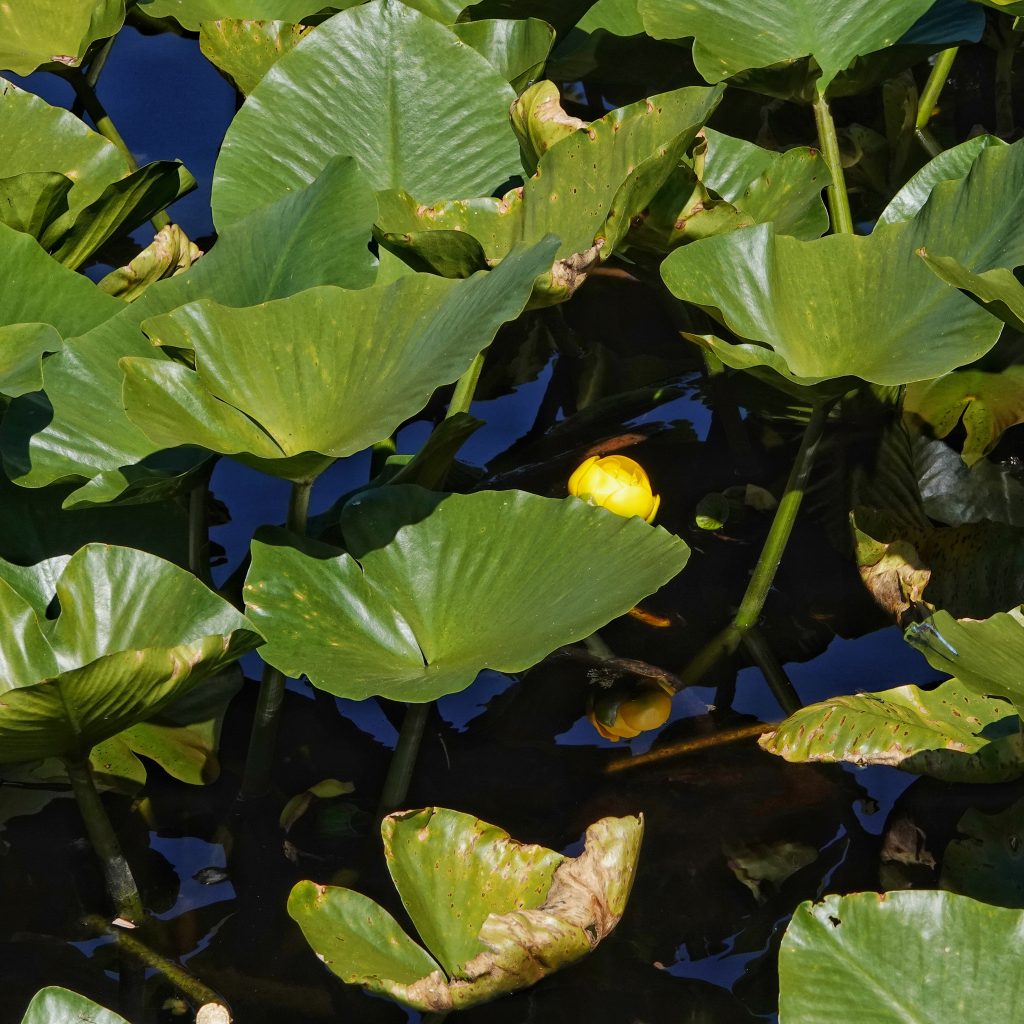
I once fell out of an aluminum rowboat when fishing on Lacamas Lake in Clark County, Washington. I had gotten my fly caught in a lily pad, and leaned too far over the edge of the boat trying to unhook it. After a couple seconds of flailing I realized that, with a little balance, I could stand on the rhizomes of the pond lilies and keep my face out of the water (although I had one in the boat I was not wearing a life jacket). The boat didn’t capsize, but it had taken on dozens of gallons of water when my bulk pushed the gunnel into the water, and it threatened to sink completely when I tried to clamber back in. So I decided to push it to shore. But as soon as I cleared the lilies I was in water over my head, and as a poor swimmer in waterlogged jeans I wasn’t making much headway. So I got myself and the boat back into the lily pads, and carefully trod those roots until I had navigated the large arc back to shore.
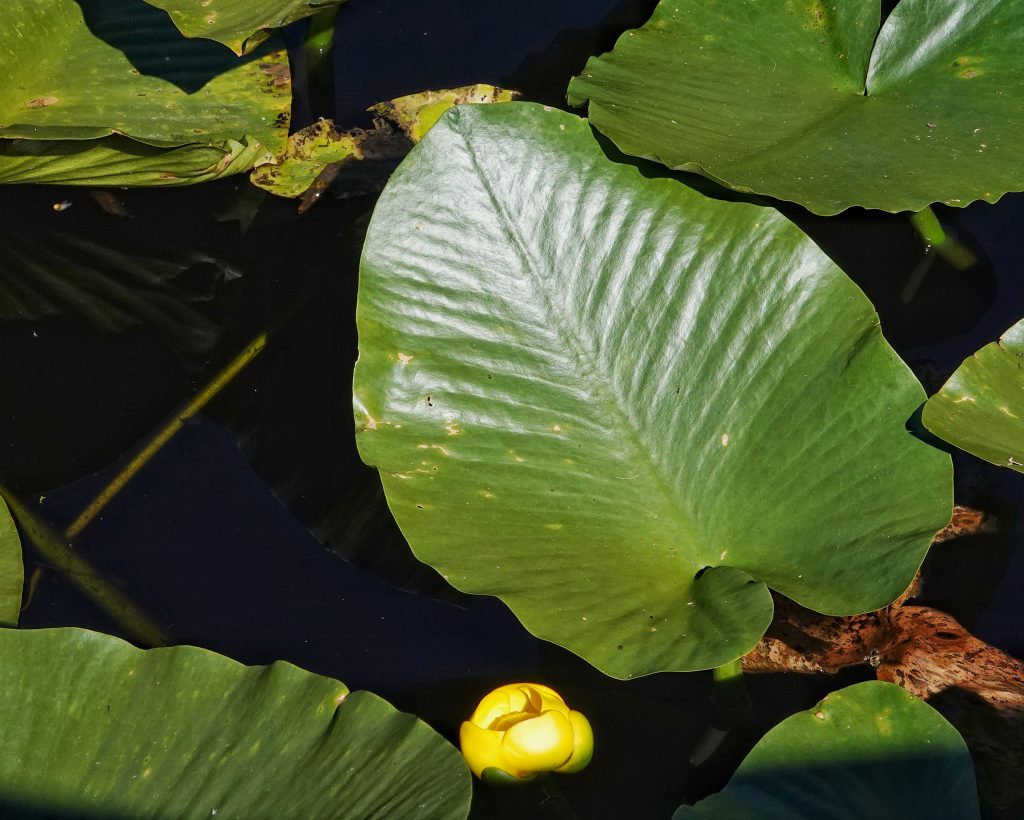
This was an important plant to the indigenous cultures of the PNW. The rootstocks (rhizomes) were boiled or roasted, and even eaten raw, as a vegetable, and were also sliced and dried for future use. The seeds could be roasted (they are said to taste like popcorn), and were dried and ground to make bread and porridge. The roots were also used medicinally to treat heart, lung, and blood ailments, as an analgesic, and as a contraceptive, and the leaves found their way into a variety of poultices. It has the odd propensity to respire alcohol instead of carbon dioxide when the mud in which it grows loses oxygen. For a more complete list see the Native American Ethnobotany Database website.
Facebook has, in its nearly infinite lack of wisdom, deemed me spam, and I cannot share anything containing my website. I can post and link, but that is a laborious process. So, I will be making the effort with this profile, but after that folks will need to follow my timeline, subscribe, or just check in regularly to see new posts. Sorry for the inconvenience.
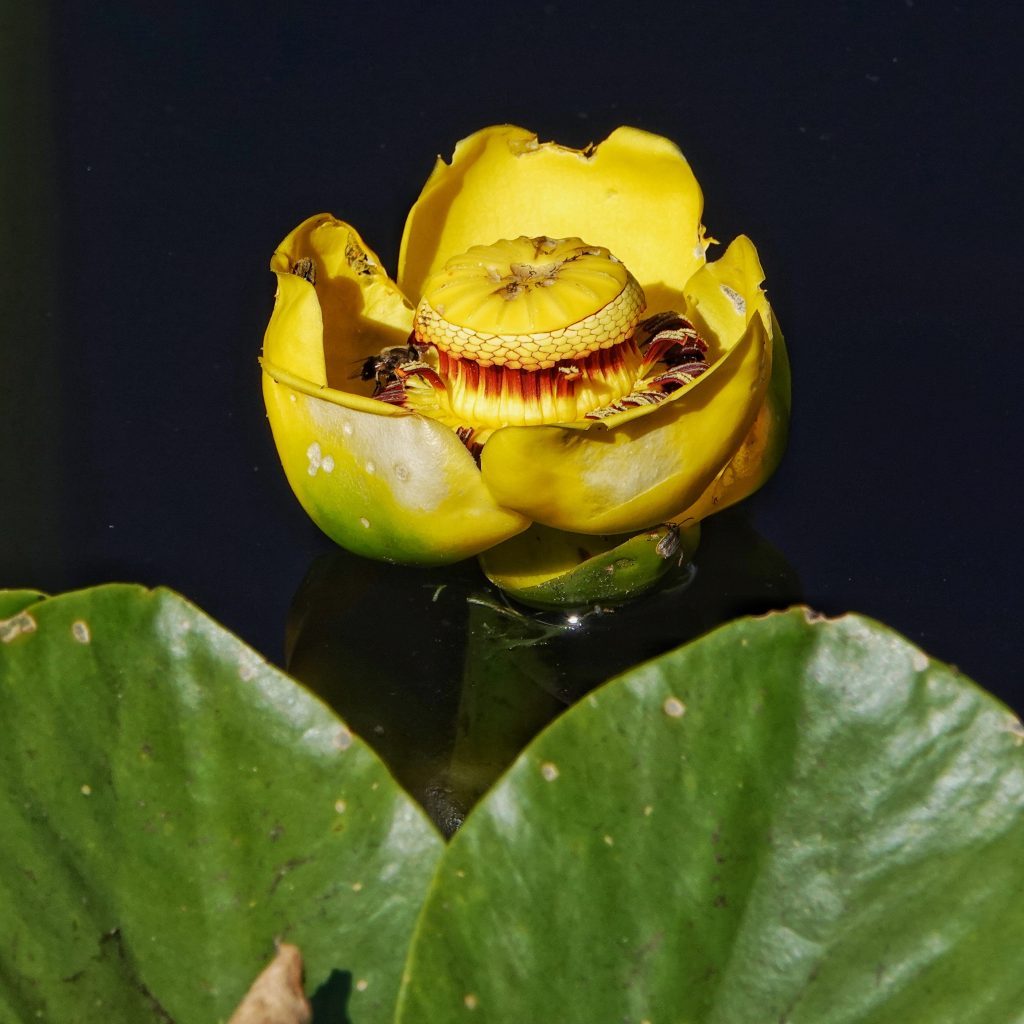
Description-Perennial aquatic, with the rhizome bearing the flowers and leaves; leaves mostly floating, sometimes suspended when water levels drop, leaves dark green, heart-shaped, 4-16” long and 2/3 as wide; flowers yellow, with 6-9 large, showy sepals, the outer ones leathery and greenish, inner ones taller and yellow; 10-20 short, thich petals about the same height as the abundant reddish purple stamens.
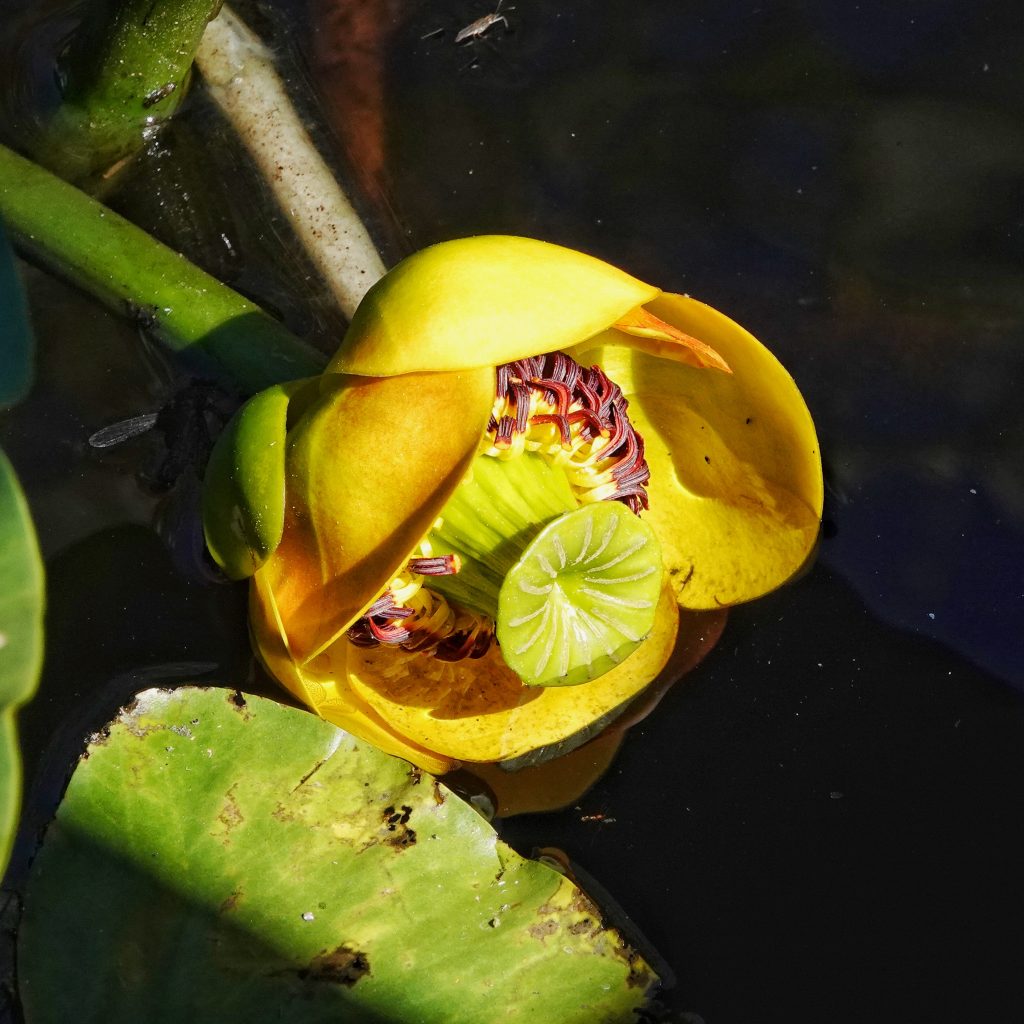
Similar species–Nuphra variegata has fewer sepals and they are red near the base, smaller flowers, and is only found in se BC and n Idaho in our region; Nymphaea sp. have smaller leaves that lay flat on the water, and white to pink or purple flowers.
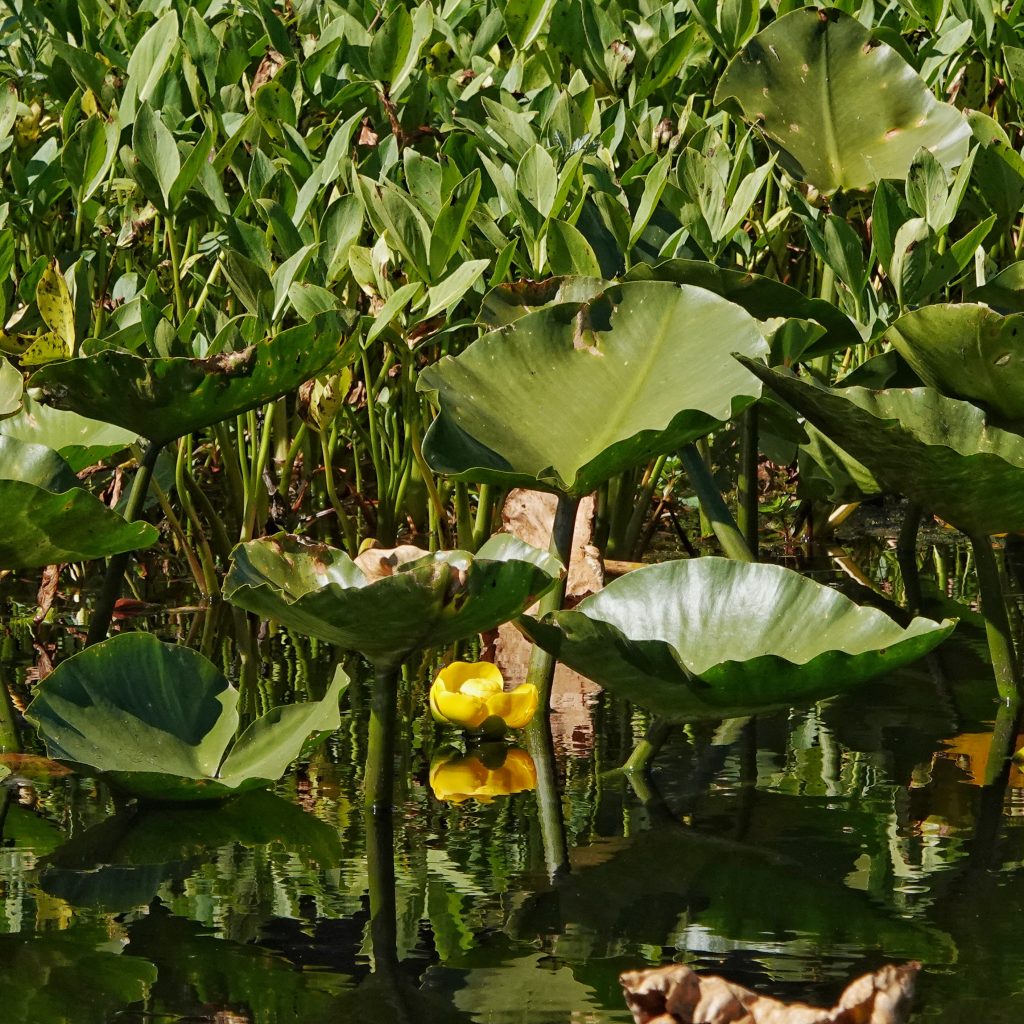
Habitat-Shallow ponds, lakes, sloughs, slow moving streams and rivers, up to 5,000’ elevation.
Range– Native to western North America; region wide in appropriate habitat in the PNW, but absent from the hottest, most arid areas.
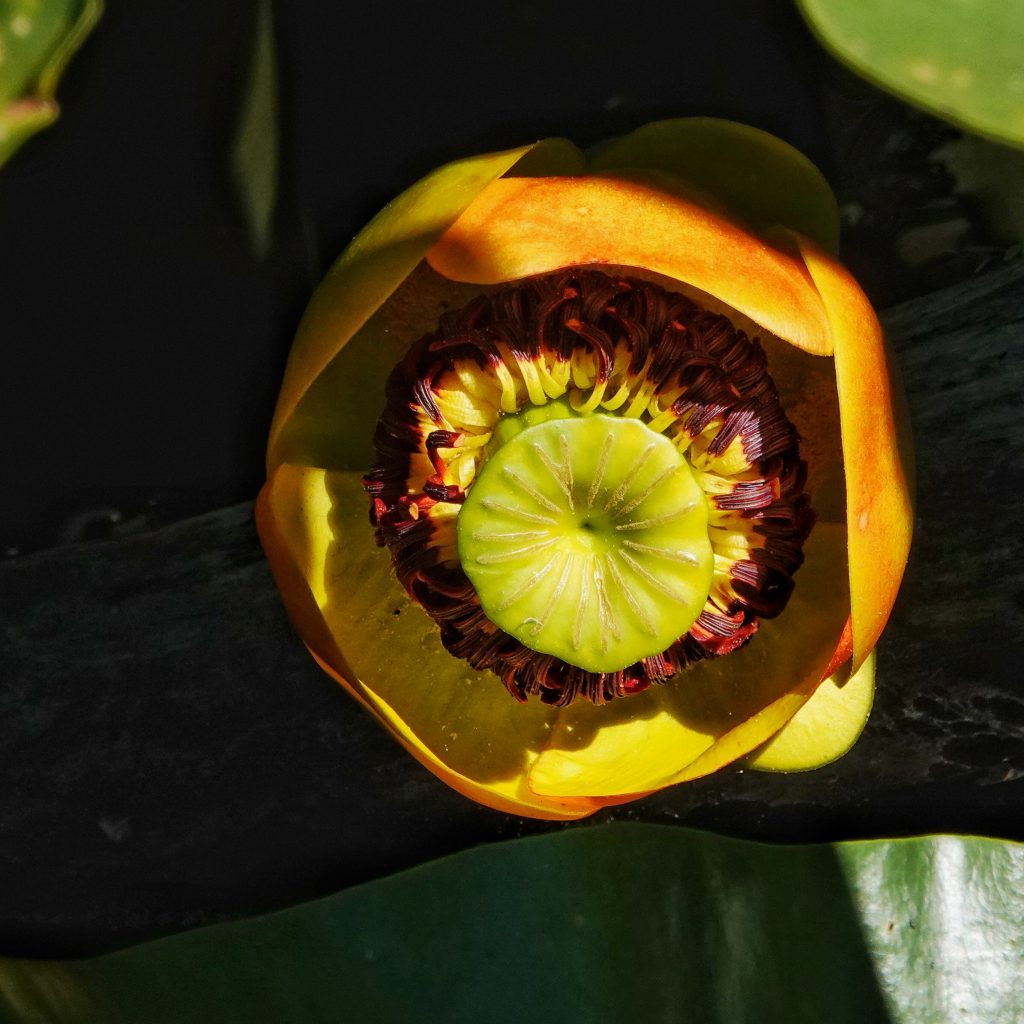
Reproductive timing-Blooms May through August
Eaten by–Elophila obliteralis moths use it as a larval host; subsurface stems are bored by larvae of aquatic leaf beetles in the genus Donacia, and adults feed on the leaves; waterfowl eat the seeds;
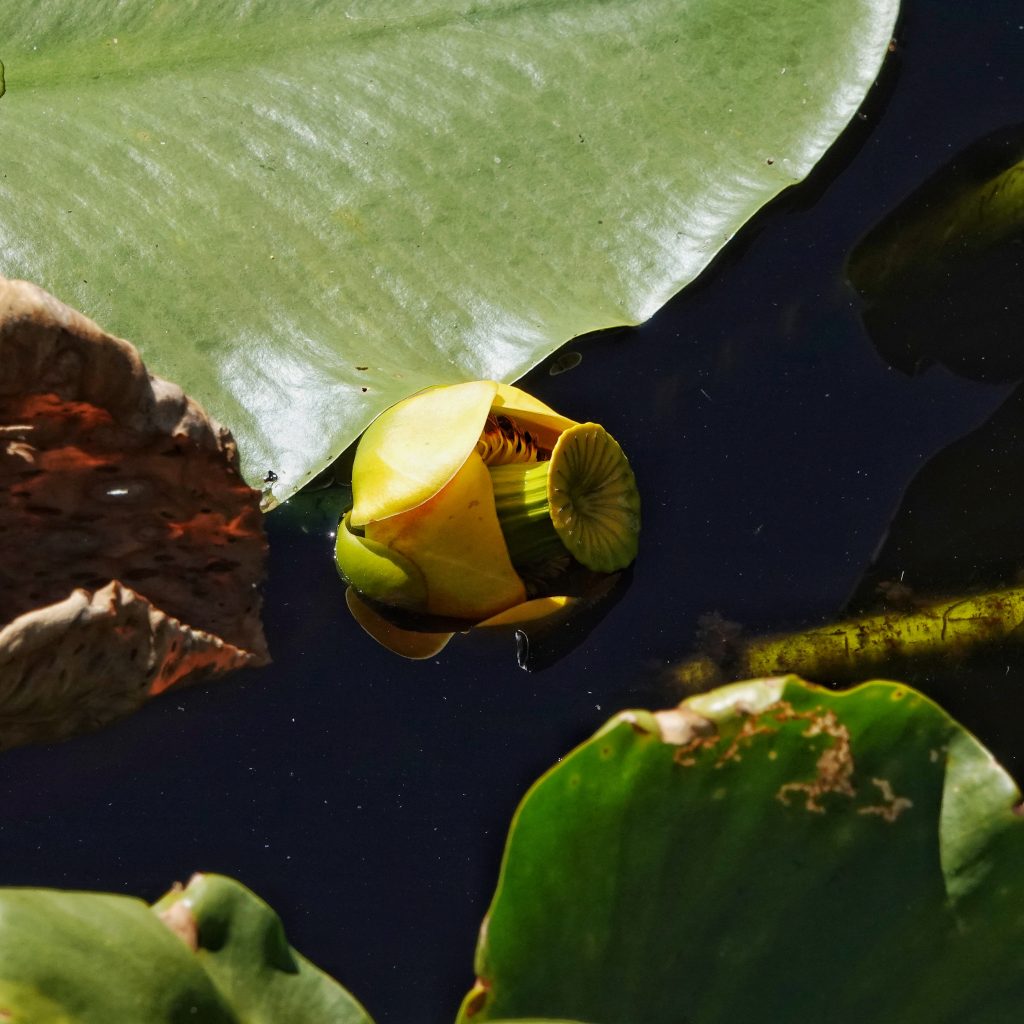
Etymology of names–Nuphar is from the Greek word for ‘water lily’. The specific epithet polysepala is from the Latin words for ‘many leaved’, and refers to the many petal like sepals of the flower.
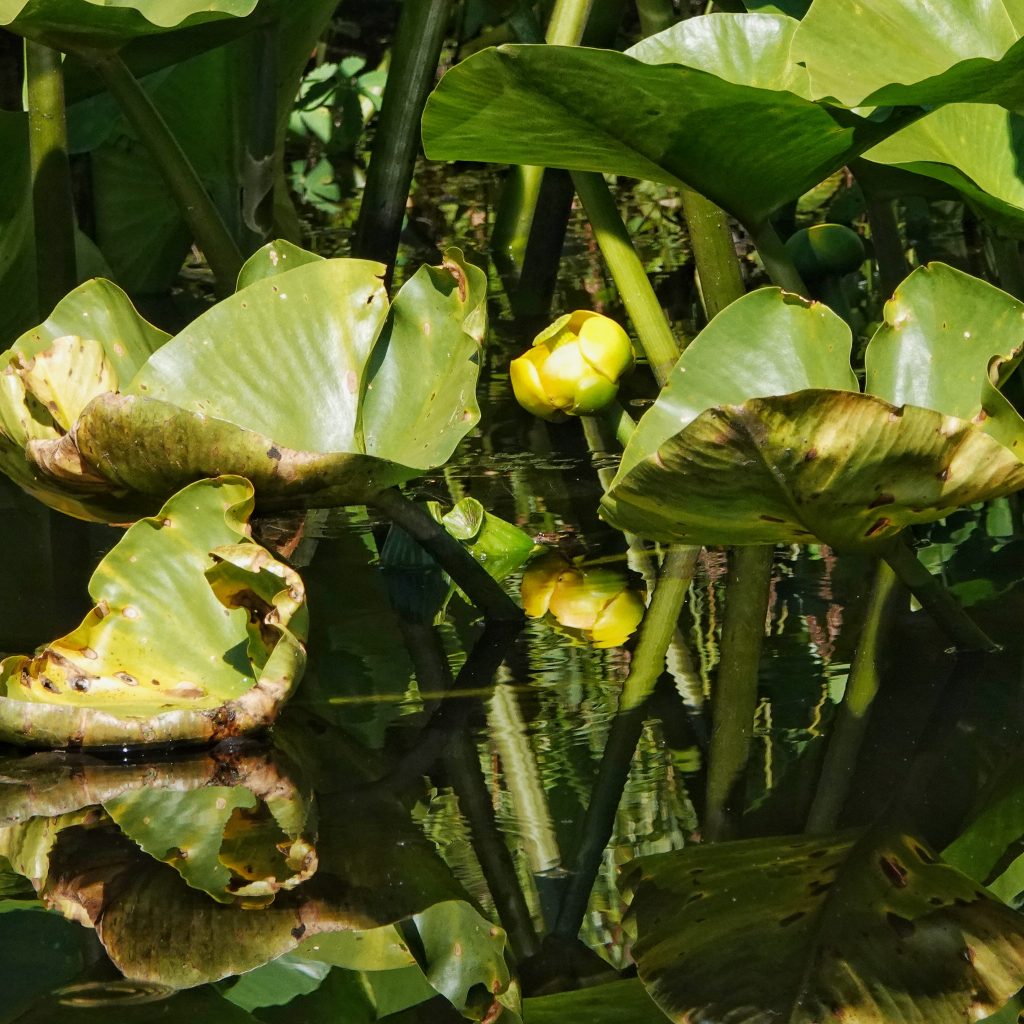
Nuphar polysepala – Yellow Pond-lily
BRIT – Native American Ethnobotany Database
Burke Herbarium Image Collection
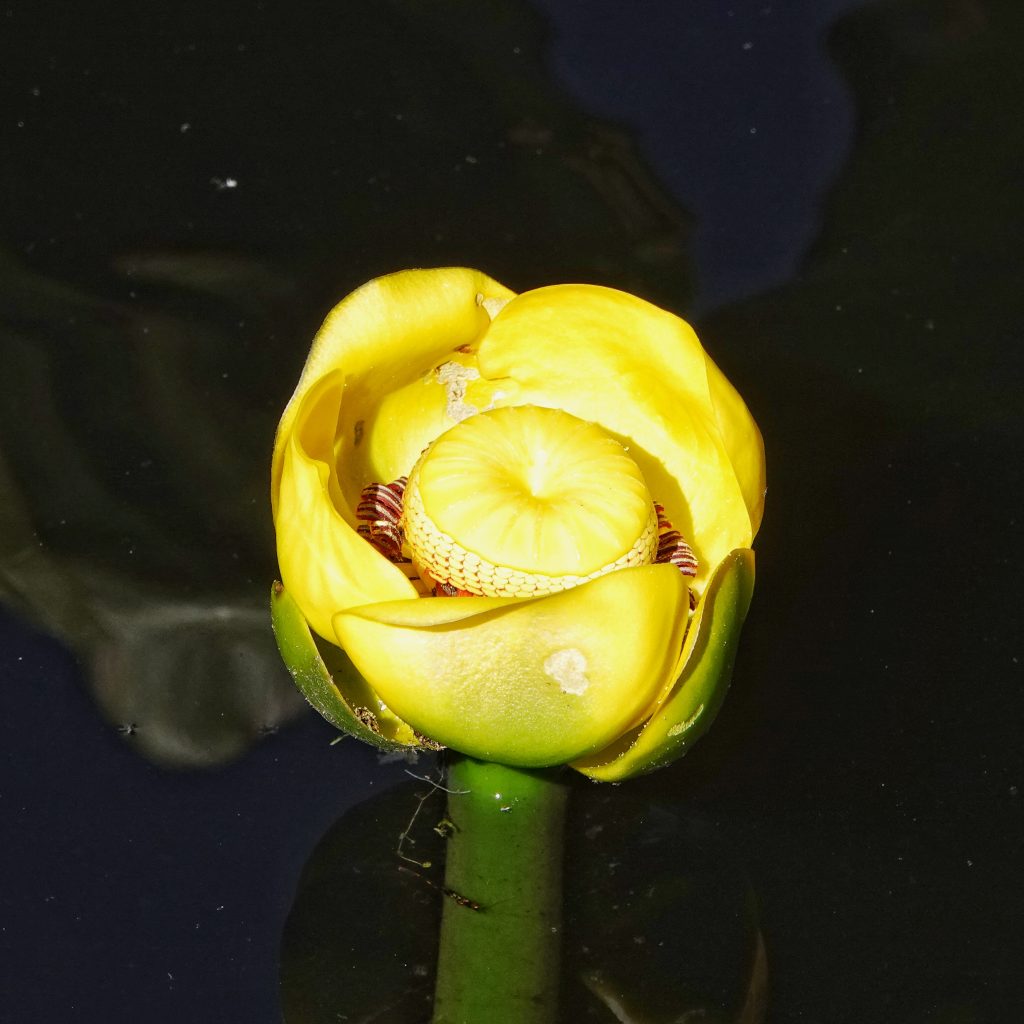
Hi Dan,
Did you actually mean to say wakas? Here it is called wokas. I really enjoy your articles!
Wakas was the spelling I found, but obviously wokas is also used. Thanks for your appreciation!
I think you can appeal such “rulings” by facebook.
Well, Alison, I have many times appealed to Facebook to change rulings, algorithms, and protocol, and I’ve never even received an answer, let alone any satisfaction. And the thing is, I’m just tired of Facebook, both as an entity and as a gathering place. I’m tired of the trolls, and the egos and the tribalism. I’m tired of people asking me questions about things that are in the profile they didn’t bother reading, and people stating things that are contained in the profile, as though I hadn’t bothered to cover such salient points. And frankly I’m tired of having to do the work to hand deliver these profiles to those who won’t make the minor effort of subscribing to the site or following my page, since I’ve already put hours into finding and collating and formatting the data for the site. And I’m realizing that I can’t be concerned with who does or doesn’t read these things, or how many views I get. I’m so tired of leading horses to water they don’t drink. The tank is in the corner of the pasture, and whether they find it or not is not my business. My business was to build the tank, and make sure it has water in it.
You’ve bitten off an amazingly big chunk with this project, and you go into so much detail with each entry! Impressive. I got here when I searched for Etorofus obliteratus, a beetle I photographed today on an Angelica plant on a Fidalgo Island roadside. iNaturalist suggested it and I wanted a little more info before saying that was it. I don’t know insects at all but I’m OK with plants. Am I right that there are no orchids yet, or did I miss them? I look forward to your posts on any native orchids. Thanks!
Nice find on the Etorofus, Lynn! Orchids are mostly done around here, although you might find some at high elevations. I intend to profile some orchids, but I haven’t seen any in a while. Thanks for the kudos on the site!